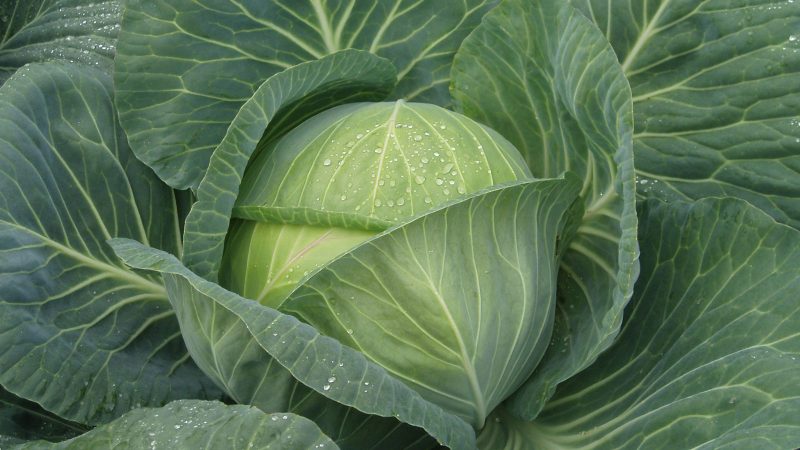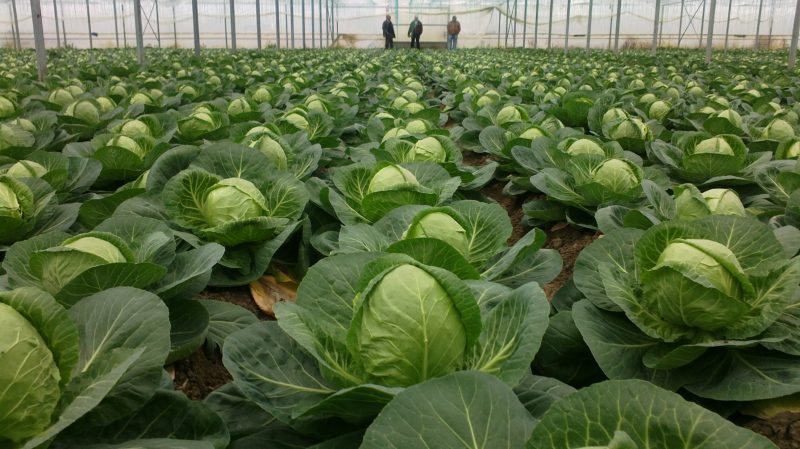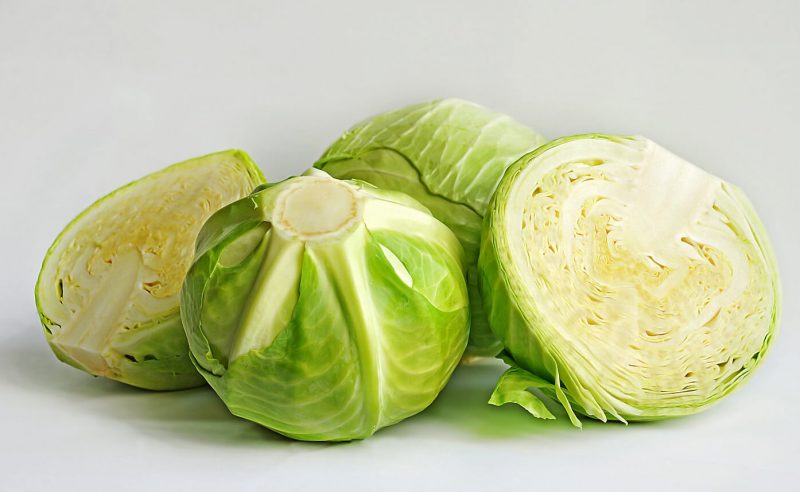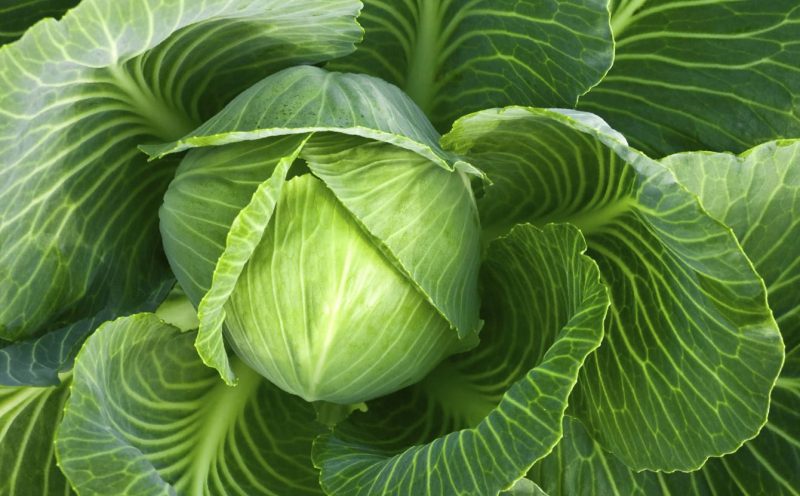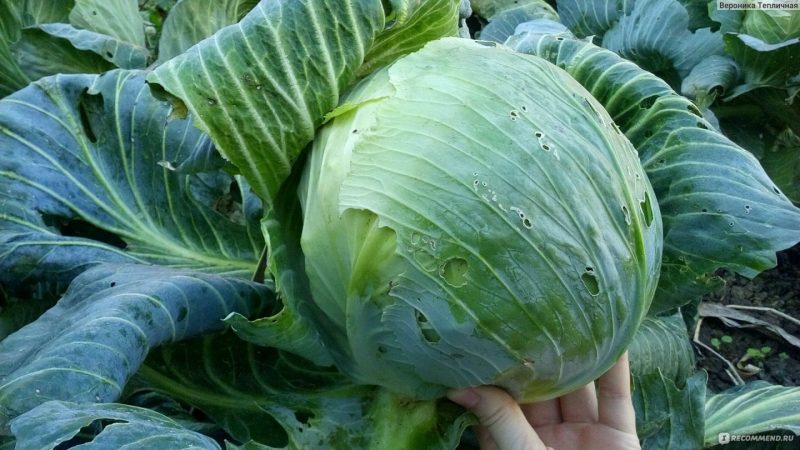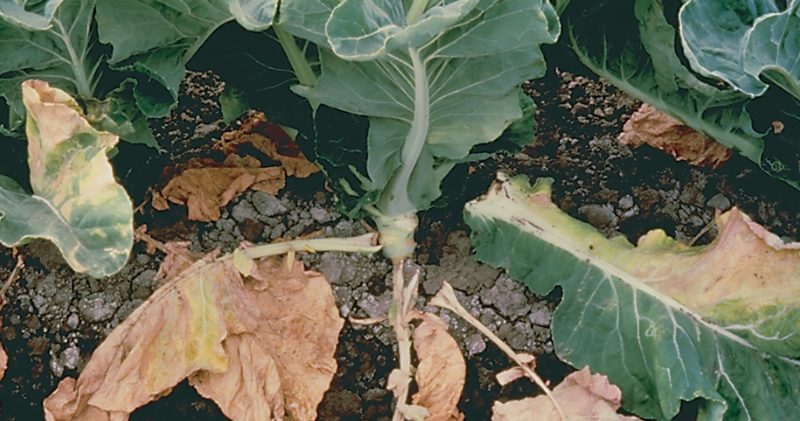Cabbage is a herbaceous culture from the Cruciferous family, which has many forms. The most popular variety, which was already universally grown throughout the entire territory of Kievan Rus in the 17th century, is white cabbage.
Material Content:
Description of varieties of culture
White cabbage is represented by plants with thickened undersized stems, large-sized foliage, and heads of cabbage, which are apical buds that have grown greatly. Their mass and other parameters depend on the particular variety.
The most productive and well-proven varieties of vegetables:
- "Number one mushroom 147" - an early ripe variety with excellent performance and the same commercial qualities. The mass of the head with proper agricultural technology can reach 8 kg.
- “June” is an early variety that has earned popularity for its cold resistance and good tolerance to spring frosts. With proper care, yields from 10 m² can reach 60 kg.
- “Gift” - many gardeners give preference to this medium-late variety, which can be cultivated throughout Russia, including the Urals and Siberia. A large head cabbage vegetable has a high palatability and is often used for pickling.
- “Glory” is a time-tested mid-season variety with a long harvesting interval. The weight of moderately dense forks varies from 2.5 to 4.5 kg. Keeping quality is good.
- "Moscow Late" - late ripe cabbage is represented by plants with dense forks, which can reach a mass of 8 kg.Often used for workpieces characterized by aroma and crispness.
- "Amager" is a variety favorite by vegetable growers with a long ripening period, which is not prone to cracking and easily tolerates transportation. Despite the more modest head sizes, the crop is characterized by a stable yield and good tolerance of drought.
Features of growing on the site
The cultivation of white cabbage in the open ground can be conditionally divided into 3 stages:
- The preparatory period is the distillation of seedlings (March - April) or its purchase in a specialized store.
- Planting work - preparing the right site and planting seedlings.
- Care is the longest and most painstaking stage, during which the grower will have to water, loosen the beds, as well as feed the plants and protect against harmful organisms.
Site selection and soil preparation
For cultivation of white cabbage, plots with excellent lighting are selected, where representatives of the Cruciferous family have not been grown for the last 3 years.
Quality vegetables can be obtained on the fertile lands of a slightly acid reaction. The soil in the selected area is being prepared since the fall, when in weather without precipitation the territory is dug up to the depth of the arable layer with a slight eversion of clods, which allows destroying the stock of the pest left for the winter.
With the arrival of spring heat, when the snow cover is gone, harrowing is carried out to "close the moisture." Later, before planting seedlings, the site is systematically weeded to keep the land clean.
Timing and planting cabbage
The optimal time for planting seedlings in open ground depends on the selected variety:
- the signal for planting seedlings of early cabbage is the presence of 5 - 7 leaves and reaching 12 - 20 cm in height (as a rule, such parameters for seedlings are noted in early May);
- mid-ripening cabbage and late cabbage are planted when 4-6 leaves are formed, when the height is at least 15 cm (from the second decade of May to the first half of June).
The scheme for planting white cabbage, as well as the timing, is directly dependent on the interval of vegetation of the crop:
- early representatives of the vegetable crop are planted in increments of 30 cm between each specimen, while the distance between the rows is maintained within 40 cm;
- for vegetables with medium ripening dates, a 50x60 cm scheme is suitable;
- for later - 60x70 cm.
After determining the intervals between the specimens and rows in the plot, holes are prepared whose parameters should slightly exceed the size of the rhizome of seedlings with an earthen lump. A handful of sand, peat, humus and wood ash are poured into the recesses. A little nitroammophoska is also added.
Seedlings are lowered into the wells after the fertilizers are moistened, which will protect the root system from burns.
First, seedlings are sprinkled with moist soil, and after compaction, the trunk circles are covered with an insignificant layer of dry.
How to care in the open ground
The answer to the question of how to grow cabbage in the country and get a high harvest is very simple - you need to regularly and competently care for the vegetable crop.
- Watering. In order for the plant to fully develop and not hurt, it is necessary to establish the optimal irrigation regime and strictly follow it. Irrigation is always carried out in the evening, when the activity of the sun is not so high. If the weather is cloudy, then the interval between heavy humidifications can be 6 days. In hot and sunny weather, the gap is reduced by almost 2 times - 2 - 3 days.
- Soil treatment. After watering or heavy rainfall, to ensure free air access to the roots of the culture, the soil under the plants loosens and swells.To reduce the number of loosening and retain moisture for longer, it is recommended to mulch the beds with peat, which is also an excellent organic fertilizer that nourishes developing cabbage.
Fertilizers and fertilizing
Fertilizers for white cabbage are very important, as they are the key to good crop growth and guarantee the grower a large and high-quality crop.
The first three times top dressing is carried out even before planting a seedling in open ground:
- After picking seedlings, the soil spills well, and then a complex of mineral fertilizers is introduced, consisting of 2 g of potassium fertilizer, the same amount of ammonium nitrate and 4 g of superphosphate.
- After a two-week period of time, the seedlings are fed again with the same fertilizers, but in doubled quantities.
- The third fertilizer application is considered “quenching” and is carried out 2 days before planting in the garden, when the seedlings are watered with 8 g of potassium agrochemicals, 5 g of superphosphate and 3 g of ammonium nitrate dissolved in it.
When the cabbage is on the beds, the introduction of nutrients continues:
- For intensive formation and development of leaf plates, plants are fed with nitrogen-containing agrochemicals.
- After the start of heading, the nutritional composition changes: the soil is enriched mainly with phosphorus and potassium with a slight addition of nitrogen in the form of urea or organics.
Pest and Disease Control
Certain plant diseases are characterized by intensive development and spread, which can lead to an early death of cabbage, if treatment is not started immediately.
Among the most dangerous are:
- Kila is a fungal disease that affects early cabbage in the seedling phase. In order to protect, diseased specimens should be removed, the earth shed with a solution of manganese.
- The black leg is a disease that is also characteristic of the early stages of cultural development. In case of damage, diseased plants are removed, and the earthen coma where they grew is replaced.
- Peronosporosis - causative agents of the disease, as a rule, are in the seed material, which must be subjected to pre-sowing treatment. With the development of downy mildew, it is recommended to treat the plantings with a fungicide with a short period of toxicity so that no pesticidal residue remains in the harvested crop.
- Fusariosis is a dangerous disease in which diseased plants are destroyed, and the soil is well disinfected with fungicidal preparations.
Among pests, aphids, fleas, slugs and scoops are the most dangerous. Contact action insecticides, which are used before the formation of heads of cabbage, act as an effective way of protection.
Important! Gastropod pests are subject to mechanical collection and destruction.
White cabbage is a popular vegetable that is grown everywhere along with potatoes. Subject to simple recommendations, even a beginner grower will get a good harvest.


